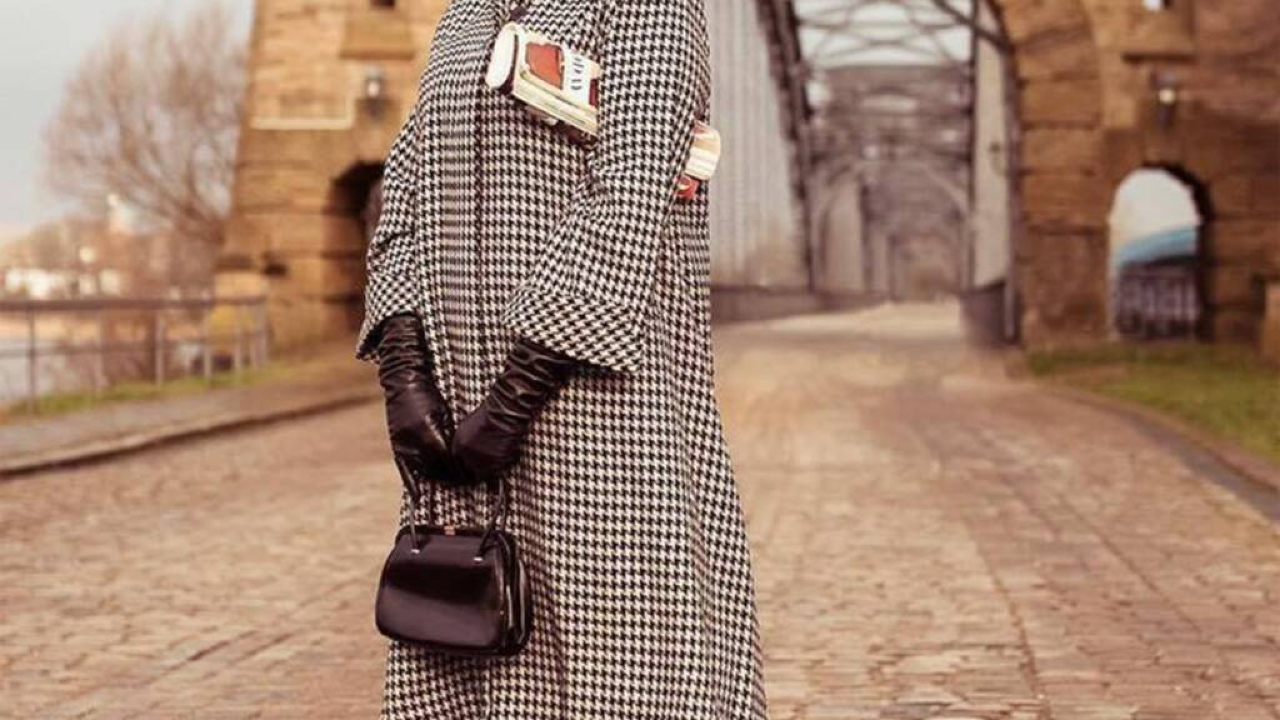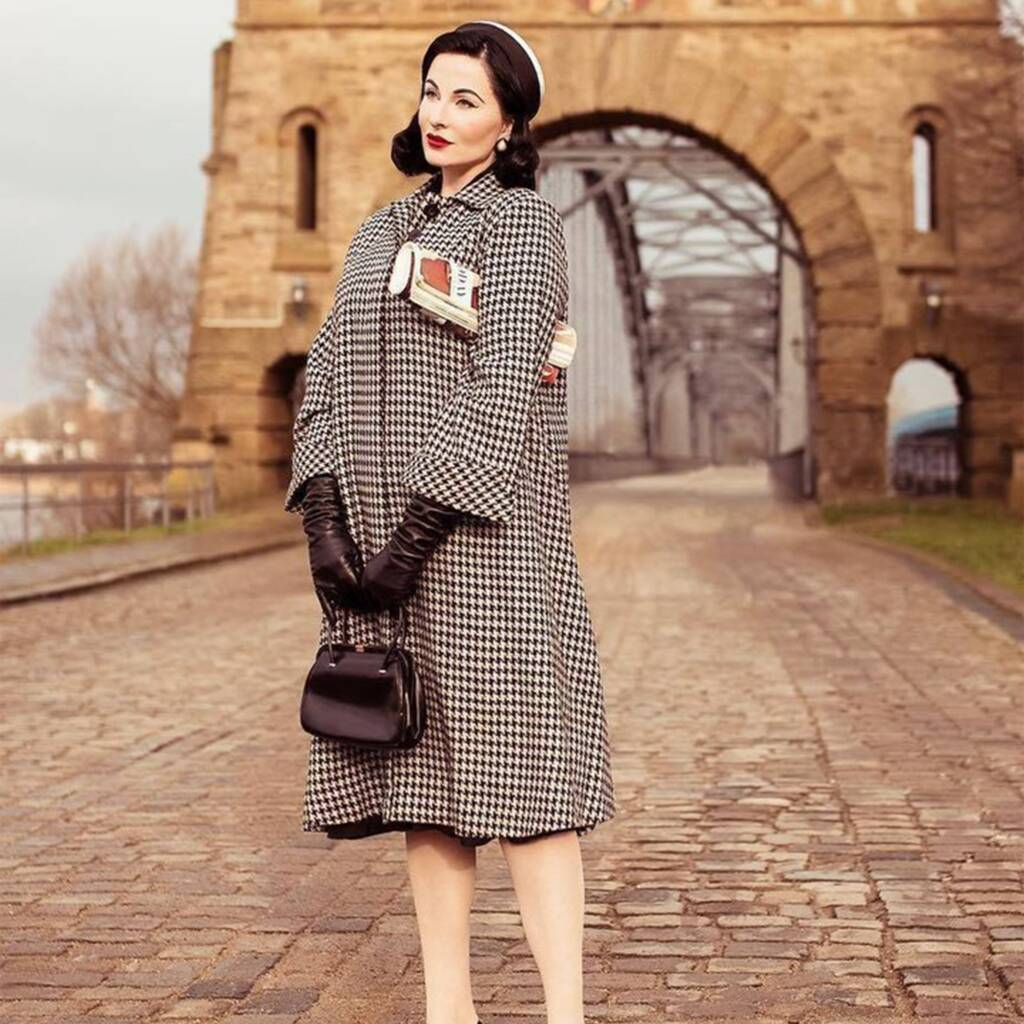AllVintageStyles
Vintage fashion encyclopedia
Swing Coat


A 1940s swing coat is an A-line wool coat that flares dramatically from the shoulders or waist, representing post-war fashion's return to feminine luxury and elegant silhouettes after the practical clothing restrictions of World War II.
Quick Facts
- Era: 1940s (peak popularity 1946-1949)
- Origin: United States (post-WWII fashion revival)
- Garment Type: A-line wool coat with dramatic flare
- Key Identifiers: A-line silhouette, quality wool construction, fitted shoulders, swing movement
- Typical Resale Price: $150-$600 (authentic vintage pieces)
- Best For: Vintage fashion collectors, formal occasions, and 1940s historical reenactment
History & Evolution
The swing coat emerged in the mid-1940s as American fashion celebrated the end of World War II fabric rationing and embraced feminine luxury after years of practical, military-influenced clothing. The dramatic A-line silhouette represented a return to pre-war elegance and optimism about peacetime prosperity and traditional gender roles.
These coats became symbols of post-war affluence and sophistication, requiring significant yardage that had been impossible during wartime rationing. The swing movement created an elegant, graceful silhouette that emphasized femininity and movement, often worn over the fitted dresses and suits that defined 1940s fashion. Quality construction and luxurious details reflected renewed access to fine materials and craftsmanship.
By the early 1950s, the swing coat evolved into the even more dramatic circle coats and eventually influenced Christian Dior's "New Look" silhouettes. Today, authentic 1940s swing coats are highly prized by vintage collectors for their superior construction, historical significance, and representation of post-war American optimism and feminine elegance.
Authentication Tips
Authentic 1940s Features:
- High-quality wool construction with substantial weight and structure
- A-line cut that creates dramatic swing movement from shoulders or waist
- Period-appropriate construction with hand-finished details
- Vintage sizing that tends to run smaller than contemporary measurements
- Quality hardware including buttons, buckles, and closures typical of 1940s
Common Reproductions/Modern Pieces:
- Lightweight fabrics that lack vintage wool substance and structure
- Modern synthetic materials or wool blends instead of pure wool
- Contemporary sizing and proportions that don't match 1940s construction
- Machine finishing that lacks hand-crafted details of vintage pieces
- Modern closures or hardware that contradict 1940s design elements
Styling & Use Cases
- Best for vintage enthusiasts: Pair with 1940s dresses, seamed stockings, and vintage pumps for authentic post-war styling
- Ideal for formal occasions: Style over modern evening wear for elegant vintage-inspired formal looks
- Perfect for historical events: Combine with period-appropriate accessories for 1940s reenactment or themed occasions
Modern styling tips:
- Wear over contemporary fitted dresses to recreate the classic 1940s silhouette
- Pair with modern trousers and blouses for updated vintage professional styling
- Style with vintage-inspired accessories like gloves and structured handbags for cohesive retro elegance
FAQ
Q: How can I tell if a swing coat is authentic 1940s vintage?
A: Look for high-quality wool construction, A-line cut with dramatic swing movement, hand-finished details, vintage sizing that runs small, and construction methods typical of 1940s tailoring. Authentic pieces show superior craftsmanship and materials.
Q: What's the typical price range for vintage 1940s swing coats?
A: Authentic vintage swing coats range from $150-$600 depending on condition, designer label, and quality of construction. Exceptional examples or designer pieces command premium prices among vintage fashion collectors.
Q: How should I care for a vintage 1940s swing coat?
A: Dry clean only to preserve the wool construction and maintain the coat's structure. Store hanging with proper shoulder support to prevent distortion of the A-line silhouette and protect the vintage tailoring.
Q: What makes 1940s swing coats valuable to collectors?
A: Their representation of post-war American optimism, superior wool construction and tailoring techniques, historical significance in fashion evolution, embodiment of 1940s feminine elegance, and quality craftsmanship that exemplifies pre-mass production manufacturing standards.
📷: Not On The High Street
